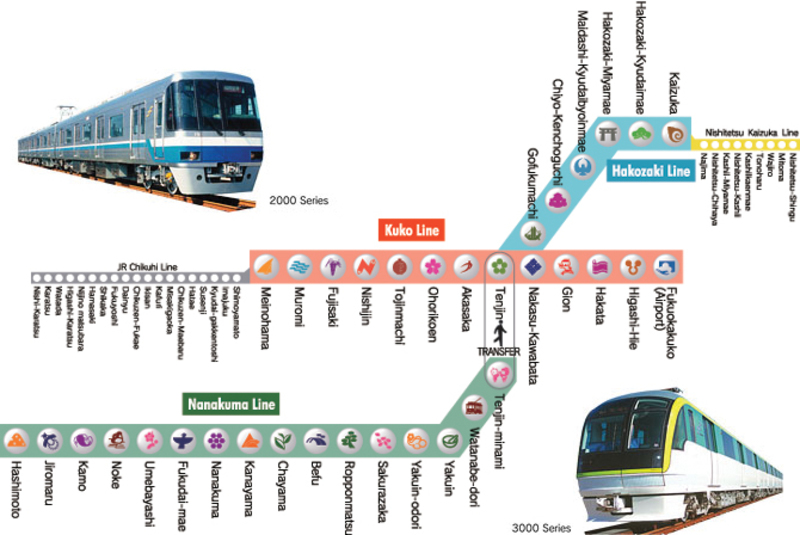Fukuoka’s railways consist of three different lines with 35 stations, where trains make runs up to 30 kilometers long. Its working schedule goes from 5:30am up to 0:25am. There, people wait for their trains on a frequency of 3 to 8 minutes. The cost of its tariff is based upon the distance traveled, having a range between ¥200 and ¥370 for an adult (from US$1.84 to US$3.4 approximately). Alternatively, one may choose from different packages to save money on the long run and there is also the plus of having Internet while using the train.
Transport in Japan: Fukuoka City Subway
Fukuoka’s railways consist of a group of three rail lines that offers their passengers an accessible transport mean to important parts of the city; having the Kuko section, which goes from Meinohama to Fukuoka’s airport, the Hakozaki section, where the train traverses a distance between Nakasu-Kawabata and Kaizuka, an the Nanakuma section, where it goes from Hashimoto to Tenjin-minami. All three railway sections are operated by the Fukuoka’s Transport Office, whose distinction is that they don’t offer either busses or trolleys, focusing solely on its train service.
Fukuoka’s railway has 35 stations scattered among its three sections. Its 29.8 kilometers long travels makes it the fastest and most efficient transport system in the city both for residents and tourists, as it connects the most important parts of the city. Another fact is that the Kuko section is the only line that goes straight to the airport.
History
After years of planning and hard work, Fukuoka’s Transport Office inaugurated the first line of the railway system on the 26th of July of 1981. This first line was the Kuko section, which consisted by that time on seven stations from Muromi to Tenjin. The first expansion was finished in 1982, where the Nakasu-Kawabata was added, followed in 1983 with the Gion station and Hakata station in 1989. From 1925, it lasted until 1993 to finish the Kuko line that is presently used, one with 13 stations on a 13 kilometers length.
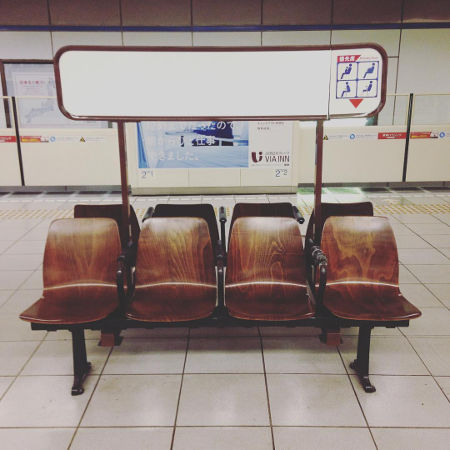 Fukuoka Subway
Fukuoka Subway
The second line was the Hakozaki section. This one was open to the public on the 20th of April of 1982, a year after the Kuko section’s inauguration. It initially consisted solely on the Nakasu-Kawabata and Gofukumachi stations but later on they started opening new extensions, such as the Chiyo-Kenchoguchi station in 1984 followed by three other ones in 1986.
The third line started functioning much later on, as the Nanakuma section was inaugurated 24 years after the first line was open to the public on the 3rd of February of 2005 with the 16 stations that are open at this very moment. Presently, there is a 1.6 kilometers expansion being developed, this one will connect the Tenjin-Minami to the Hakata station through the city’s canal. It is expected to be finished by the year 2020.
Lines and stations
The Fukuoka railway system (Fukuoka-shi Chikatetsu) consists of three different lines operated by the city’s Transport Office, which is complemented by other means of transportation to offer an efficient service to tourists and residents of the city. The complete system is 29.8 kilometers long with 35 stations scattered along its lines. These have different colors, a number and a name that are used for differentiation. The number is most commonly used as a way to identify each section. Also, they used symbols on each station, as an example one can point out that the station that goes to the airport is symbolized by an airplane.
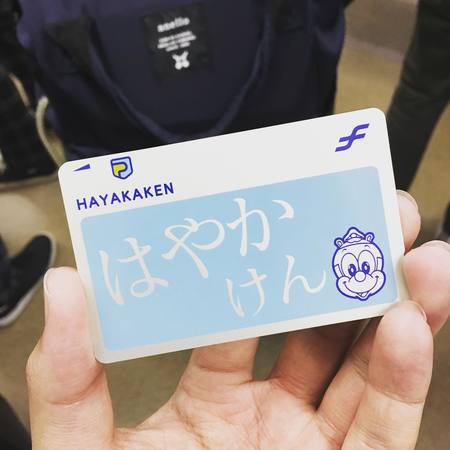 Fukuoka-shi
Fukuoka-shi
One can find at the entrance of each station the logo of Fukuoka’s railway, the number of the section and the logo of the station. The color of the symbol is not related to the line. All stations have automatic doors on their platforms and the three sections are operated through an automatic system, nonetheless there is always a driver as a precaution.
Kūkō section
The first section of the Fukuoka railway has 13 stations distributed between Nishi-ku and Hakata-ku, going through important parts of the city, such as Nishijin, Tenjin, Hakata and the airport. Commonly known as Line #1 (Ichi-gō-sen), this section is connected to the Chikuhi line, a train station that connects Meinohama with Karatsu and Imari. This is the only railway in Japan connected directly to an airport, it is also the most used line among tourists, as it is connect to Fukuoka’s tourist attractions.
- Color: Orange
- Number: 1
- Stations: 13
- Length: 13.1 kilometers
- Time elapsed: 25 minutes
- Schedule: 5:30 am to 0:25 am
Stations: Meinohama, Muromi, Fujisaki, Nishijin, Tojinmachi, Ohorikoen, Akasaka, Tenjin, Nakasu-Kawabata, Gion, Hakata, Higashi-Hie, Fukuokakuko (Airport)
Hakozaki section
Commonly known as Line 2 (Ni-gō-sen), this one is the second line that started working on the railway system. Its seven stations connect Hakata-ku with Higashi-ku. Kaizuka, its terminal, is connected to the Kaikuka line, a railway that links Fukuoka with Shingu. Some trains of the Kuko section go through Hakozaki instead of going to the airport.
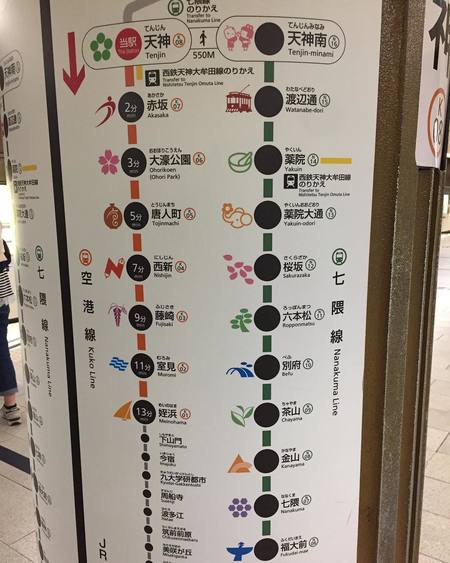 fukuoka Metro
fukuoka Metro
- Color: Blue
- Number: 2
- Stations: 7
- Length: 4.7 kilometers
- Time elapsed: 10 minutes
- Schedule: 5:30 am to 0:25 am
Stations: Nakasu-Kawabata, Gofukumachi, Chiyo-Kenchoguchi, Maidashi-Kyudaibyoinmae, Hakozaki-Miyamae, Hakozaki-Kyudaimae, Kaizuka
Nanakuma section:
This one is the most recent section of the railway system, having being inaugurated in 2005 while the other two were opened in 1981 and 1982 respectively. Commonly known as Line 3 (San-gō-sen), this section connects Nishi-ku with Chuo-ku, linking the commercial city with the southwestern part of Fukuoka.
- Color: Green
- Number: 3
- Stations: 16
- Length: 12 kilometers
- Time elapsed: 24 minutes
- Schedule: 5:30 am to 0:25 am
Stations: Tenjin-minami, Watanabe-dori, Yakuin, Yakuin-odori, Sakurazaka, Ropponmatsu, Befu, Chayama, Kanayama, Nanakuma, Fukudai-mae, Umebayashi, Noke, Kamo, Jiromaru, Hashimoto
Schedule and frequency
All the three sections operate between 5:30am and 0:25am. In there, each one of the trains pass around every 3-6 minutes during rush hour and 4-8 minutes the rest of the day. The schedule doesn’t change on the weekends and the railway system does not offer any late-night replacement in the hours it is not working.
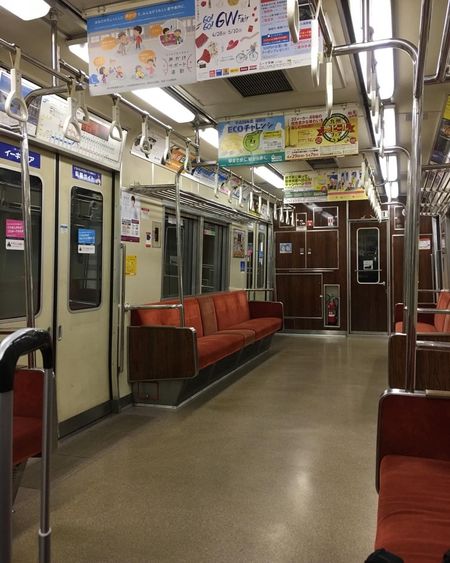 Fukuoka Subway
Fukuoka Subway
Tickets and Pricing
The price of the tickets depends on the distance traveled. On this regard one can find that they can vary from ¥200 to ¥370 for an adult (US$1.84 to US$3.4 respectively). Every range corresponds to one of six zones, each one with a corresponding tariff. As an example if one travels from 0 to 3 kilometers then one is in the range of Zone #1 which costs ¥200 (US$1.84).
IC Card “Hayakaken”
Besides buying tickets, one can also buy the Hayakaken card, which allows the person to buy one day’s worth of tickets straight into the card. These also work on trains, busses and shops in Japan if they are associated with the IC brand. Another option is to accumulate points by using the card that can be exchanged for tickets or other expenses linked to the offer.
Pricelist for common travels
- Fukuoka’s airport to Hakata station: ¥260 for adults, ¥130 for kids and handicapped people.
- Fukuoka’s airport to Tenjin station: ¥260 for adults, ¥130 for kids and handicapped people.
- From Tenjin to Hakata: ¥200 for adults, ¥100 for kids and handicapped people.
- From Nakasu-Kawabata to Kaizuka: ¥260 for adults, ¥130 for kids and handicapped people.
- From Tenjin-minami to Hashimoto: ¥330 for adults, ¥170 for kids and handicapped people.
Age categories and discounts:
The Fukuoka railway system divides its clients on four categories: Adults (12 or older), older children (6 to 11 years old), younger children (1 to 5 years old) and babies (less than a year). This distinction is important because an adult or an older boy can travel with two younger children at the cost of an adult’s ticket. The older kids (6 to 11 years old) pay a reduced tariff but they always have to pay it, even with the company of an adult. The kids discount is on the range of 45% while the babies always travel at no cost.
How to buy a ticket:
There are ticket machines in every single station of Fukuoka’s railway, each with an option of using an English menu. To buy a ticket one must first look at the chart located above or besides the machine to know the price of the trip and then select the option according to its value to receive the ticket. On this machines one may also buy tickets to the JR Chikuchi and Nishitetsu Kaizuka trains.
Passes:
Besides the single tickets, one may also buy different passes in the Fukuoka railway either as a tourist or as resident.
One day pass
This pass allows the user to travel in an unlimited way along the three sections during a single day. It is valid only on the day the person buys and one can acquire it in any machine of any stations. One can also show the pass at certain shops and restaurants to receive a discount. To check the establishments that may give discounts one has to go to the Fukuoka railway’s official webpage. One can buy this pass with either cash or using the Hayakaken card.
- Adults: ¥620 (US$5.7)
- Kids and handicapped people: ¥310 (US$2.85)
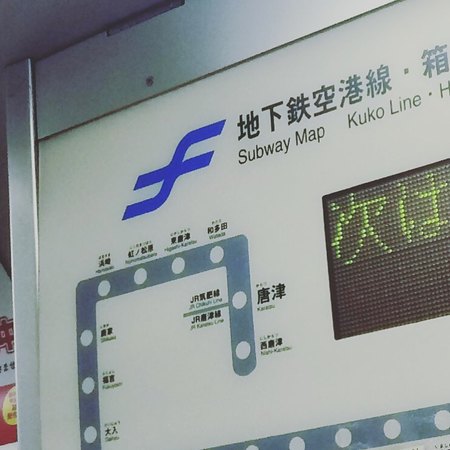
2 days pass:
This one allows the user to travel in an unlimited way on the Fukuoka railway for two days in a row, starting from the day one buys the pass. It can only be used by tourists with a visa that has a short time span, so one must show his passport in the ticketing booth. It can also be bought on the airport, the Tenjin and Hakata stations, on tourist information centers and offices of the Fukuoka railway.
- Adults: ¥720 (US$6.6)
- Kids and handicapped people: ¥360 (US$3.3)
Tourists’ pass:
The Fukuoka railway offers a tourists’ pass that allows the person to travel in an unlimited way for a day; it also gives discount to the principal touristic sites in the city, such as museums and gardens. One can buy it at the bus terminal in Tejin and Hakata, on the airport, in Tejin’s station and on other designated locations. For more information on the museums and tourist sites one has to enter the webpage of Fukuoka’s railway.
- Adults: ¥820 (US$7.5)
- Kids and handicapped people: ¥410 (3.7)
Chika pass:
The Fukuoka railway also offers passes for 1, 3 and 6 months. One just needs to go to the ticket booths or information center to know about their tariffs and conditions.
Connections:
Connections among lines:• It is possible to make a free connection between the Kuko and Hakozaki sections on the Nakasu-Kawabata station. Some users from the Kuko section continue through Hakozaki so there isn’t always the need to make a connection.
• It is possible to make a free connection between the Nanakuma and Kuko sections by walking from the Tenjin station to the Tenjin-Minami station (or vice versa) by going through an underground mall. This connection is free of charge but nonetheless it’s necessary to show the ticket when you enter.
Connections with other systems:• Kaizuka’s terminal from line 2 (Hakozaki) is connected to the Nishitetsu Kaizuka railway that connects Fukuoka with Shingu. This connection is not free of charge but one can buy tickets to this train at any ticket booth on the railway system.
• By going through Meinohama station from line 1 (Kuko) one may go to the JR Chikuhi railway that connects the station to Karatsu and Imari. One may buy the tickets for this train at any ticket booth located on the railway system.
• Line 1 (Kuko) shares the Hakata station with the JR Shinkansen (bullet train).
Rules:
The Fukuoka railway’s official web page lists a series of recommendations:
- For safety, do not enter the train in a rushed manner.
- Please be considerate in regards to the seating (give your seat to older people, kids and pregnant women).
- Do not use the cellphone inside the train.*
- Do not yell or make unnecessary noises.*
*Unlike many western cultures, the Japanese people consider making noises as a bad manner. Therefore, it is important to avoid talking loudly, use your cellphone, whistling or make any noise that may bother others.
Tips and advices
- All of the announcements that indicate the following station are done in the Japanese and English languages.
- The trains from Kuko and Kaizuka lines makes a stop in the same platforms between the Meinohama and Tenjin stations, therefore one has to be careful to not take the wrong train.
- One may buy tickets for the KR Chikuhi y Nishitetsu Kaizuka trains in any ticket machine of the train stations located among the three sections.
- All of the train sections work through an automated system, nonetheless there are drivers as a precautionary measure.
- Each station located on the three lines of Fukuoka’s railway has a unique logo assigned. One can use these besides the name and the number to locate a station.
- The one and two day passes offers some discounts in different local establishments, such as a 10% discount in shops and restaurants. The promotions may vary depending of the season but one may still find the complete information in the Fukuoka railway’s official webpage
- The Fukuoka railway is the only train in Japan that is directly connected to an airport by a train station. This makes the Fukuoka airport one that is among the airports with the easiest access in the world.
Random facts
Future expansions
In the present day there is a construction under way to make a 1.6 kilometers long extension on the Nanakuma line that will connect Tenjin-Minami with the Hakata station through the city’s canal. The project was approved in 2014 in is expected to be finished by 2020.
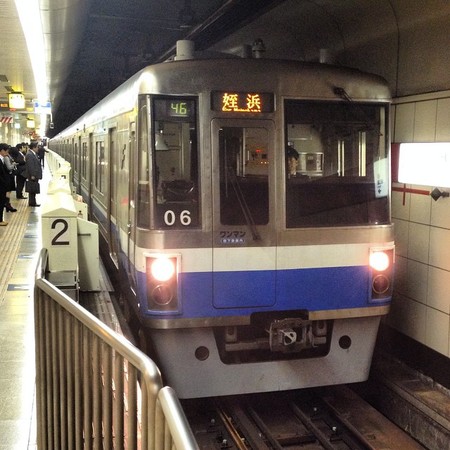
Connection with the airport
The Kuko section (Line #1) has a station directly connected to the airport, which makes the access to the airport and travel from there to the city an easy and economic task. There are no additional fees or cost to make a trip to the airport. The trip from the airport to the Hakata station (Line #1) lasts 5 minutes while traveling from the airport to Tenjin may take 11 minutes.
Besides the easy access to the airport, those who visit Fukuoka through the Shinkases (bullet trains) may want to get down on the JR Hakata station. This one has two floors: one is connected to the JR train station while the other is connected to the Hakata railway station.If one wants to to switch trains the only thing he would need is to go to the other floor.
What can you see by taking the train?
Fukuoka has a 2000 year old history so the city offers numerous historical sites, museums and landscapes that are ideal for tourists. These are some of the most famous tourist attractions that may be visited by going through the railway system:
Tenjin’s shopping mall: This mall is located underground, outside the Tenjin station, and is well known not only because it offer lots of shops and restaurants, but also because some of the oldest shrines in the city are located there. This mall connects the Tenjin station of the Kuko section with the Tenjin-Minami of the Nanakuma section.
Ohori and Maizuru Parks: These two parks are adjacent to each other and offer many tourist destinations. The lake of the Ohori Park was once part of the pits of a famous castle and on the present day it can offer beautiful landscapes and the opportunity to visit a Japanese garden and Fukuoka’s museum of the Fine Arts. Meanwhile, the Maizuru Park is located by the ruins of the ancient castle of Fukuoka. Both parks are located minutes away from the Ohori station of the Kuko line.
Kushida’s shrine: This beautiful Shinto sanctuary is one of the oldest in Fukuoka. It is located 5 minutes on foot from the Nakasu-Kawabata and Gion stations of the Kuko line.
Yatai: The yatai are food stands that are open by sunset and offers many of Fukuoka’s typical dishes, like the Hakata Ramen for example. One can find Yatais on the Nakasu and Tenjin neighborhoods, which may be accessed through their respective railway stations.
Shofukuji and Tochoji temples: The Shofukuji temple was one of the first Buddhist Zen temples in Japan, while the Tochoji temple is famous for a wooden Buddha statue that is 10.8 meters high. Both temples are located 5 minutes on foot from the Gion station of the Kuko line.
Hakata’s Canal City: the Canal City is a 5 story complex divided in two by an artificial canal. Its form and colors makes it one of the most preferred shopping spots for tourists.
Momochi: The section of Momochi that looks towards the see has become one of the main tourist sites due to its beaches, museums, restaurants and stores. The principal attractions are located besides Fukuoka’s tower.
Fukuoka Subway map
- Also Known As: Subway
- Passengers/Day 340000
- Fares: gates, smartcard
- 24h operation: No
- Air Conditioning: No
- Walk between platforms: Yes
- Driverless trains: No
- Screen Doors Platforms: Yes
- ¥100
- Fukuoka Metro Official Website
Help us
If you consider that the information we provide is wrong, not accurated, outdated, translation contains errors, and you would like to help us to improve the file...you can contact us here.
Feel free to contact us if you dont find the system you're looking for and we'll add it as soon as we can!
Thank you very much!







